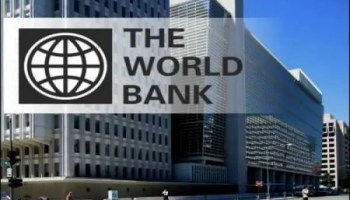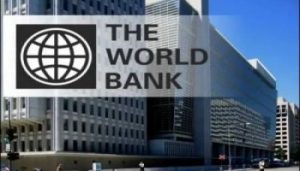
By David Akinmola
The World Bank has warned that Nigeria, alongside four other African nations, will account for nearly half of Sub-Saharan Africa’s employment challenge by 2050, underscoring the urgent need for inclusive growth and productivity-driven job creation across the region.
In its latest Africa’s Pulse report, the Bank projected that economic activity in Sub-Saharan Africa will grow modestly by 3.8 per cent in 2025, up from 3.5 per cent in 2024, before accelerating to an average of 4.4 per cent between 2026 and 2027. Despite the anticipated recovery, the report cautioned that growth alone will not be enough to absorb the continent’s rapidly expanding labour force.
According to the World Bank, “Nearly half of the region’s jobs challenge for 2025 to 2050 is accounted for by five countries—namely Nigeria, the Democratic Republic of Congo, Ethiopia, Tanzania, and Uganda.” The report added that the working-age population in Sub-Saharan Africa is expected to increase by more than 620 million during the period, with Nigeria contributing a significant portion of this surge.
While growth prospects appear to be improving, the Bank noted that job creation remains sluggish, with minimal correlation between GDP expansion and employment gains. “A one percentage point increase in growth is associated with only a 0.04 percentage point rise in the share of working-age individuals with wage jobs,” it said.
Growth Rebounds, But Jobs Lag Behind
The report observed that Sub-Saharan Africa’s recovery from the economic downturn of 2023 has been stronger than expected, helped by improved terms of trade, stabilising currencies, and moderating inflation across several economies. Central banks in the region are now better positioned to pursue policies that support private consumption and investment.
However, persistent fiscal constraints, high public debt, and limited access to external financing continue to pose challenges. The Bank warned that while growth is returning to pre-pandemic levels, structural weaknesses in labour markets and uneven productivity gains threaten long-term sustainability.
Adding to the uncertainty are global trade tensions, particularly following U.S. tariff adjustments announced in August, which have reduced export rates for many African countries. “Growth prospects in the region remain tilted to the downside due to the indirect effects of trade policy uncertainty, weakened global investor appetite, and a shrinking supply of external finance,” the report said.
Focus on Productivity and Inclusion
The World Bank emphasised that Africa’s jobs challenge cannot be solved by growth alone. It called for a dual strategy focused on both expanding job opportunities and improving job quality.
“Higher labour income per capita can be achieved through gains in labour productivity, increased employment per person, and a greater share of labour in national income,” the report stated. It urged governments to prioritise investment in education, skills development, infrastructure, and enterprise growth to raise earnings and drive inclusive development.
Without such measures, the Bank warned, Africa risks facing a demographic and economic imbalance—where millions enter the labour market with few formal employment opportunities, deepening poverty and inequality.
A Persistent Poverty Challenge
The findings build on the World Bank’s earlier report, Child Poverty: Global, Regional and Select National Trends (September 2025), which showed that Sub-Saharan Africa made virtually no progress in reducing extreme child poverty over the past decade.
According to that report, over half of the region’s children—around 52 per cent—still live in extreme poverty, the same rate recorded in 2014. Globally, one in five children is living in households surviving on less than $3 per day, with Sub-Saharan Africa accounting for a disproportionate share of the total.
The Bank reiterated that without urgent reforms to strengthen education, social protection, and job creation systems, Africa’s demographic advantage could turn into a structural crisis by mid-century, driven by unemployment, underemployment, and income stagnation.






